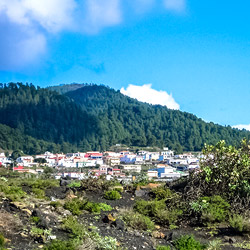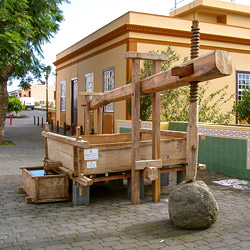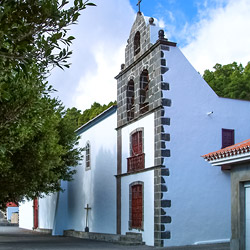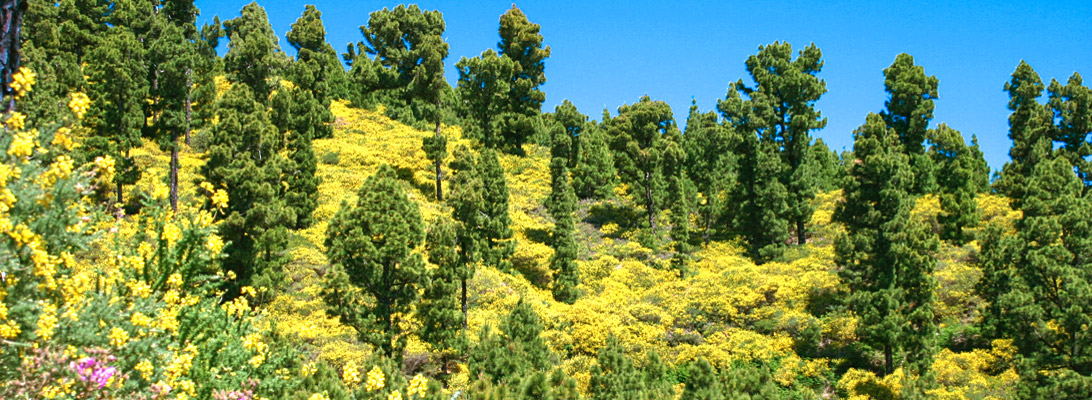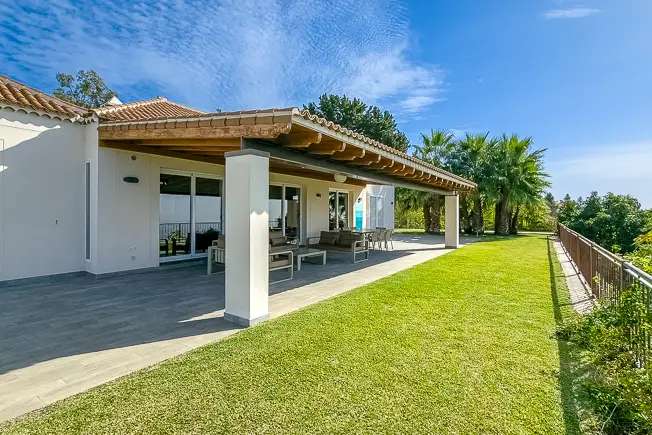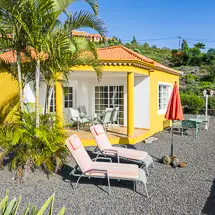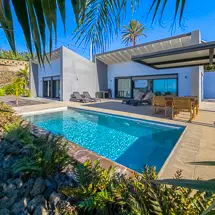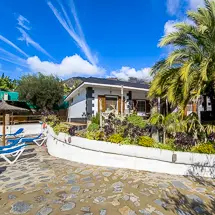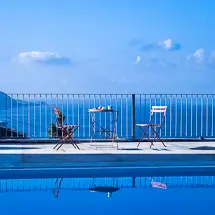The quiet town of Los Canarios (722 meters above sea level) was renamed Fuencaliente. It lies twelve kilometers above the geographical southern tip of the island with its old (and now also the new) lighthouse. This is where the Ruta de los Volcanes ends. The church San Antonio Abad originates from the 16th century.
Wine festival of Los Canarios
At the time of the grape harvest in the last week of August, Los Canarios celebrates a wine festival with a "virgin dance", a "dance of the horses" and of course with the best wines and delicacies of the region. There are several wineries here, including the largest, La Palmas (Llanovid cooperative with 200 winegrowers). The pine forest was badly damaged by the great forest fire in 2009. In this area, the inhabitants had to fear for their houses, even if nobody died.
Marine reserve off Fuencaliente
The old lighthouse on the coast houses a visitor center to the La Palma marine reserve, where visitors can take a virtual dive to understand the dangers of pollution of the seabed. In the saltworks around the lighthouse, sea salt is still extracted by evaporation, which is also available locally in the supermercados. It contains trace elements that are lost during industrial processing and tastes of the sea. It can be used as a souvenir and also to prepare papas arrugadas and other Palmeric dishes at home.
Diving and bathing in Fuencaliente
For divers, La Palma's southern tip offers the fish-rich, scenic bizarre spots of Punta Larga, Torre de Malpique and Playa de Las Cabras. La Palma's largest hotel complex ("Teneguía Princess" and "La Palma Princess" hotels) was built near the neighboring beaches of Playa Chica and Playa Zamora with their crystal clear waters and an exciting underwater landscape to be discovered while snorkeling.







